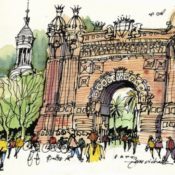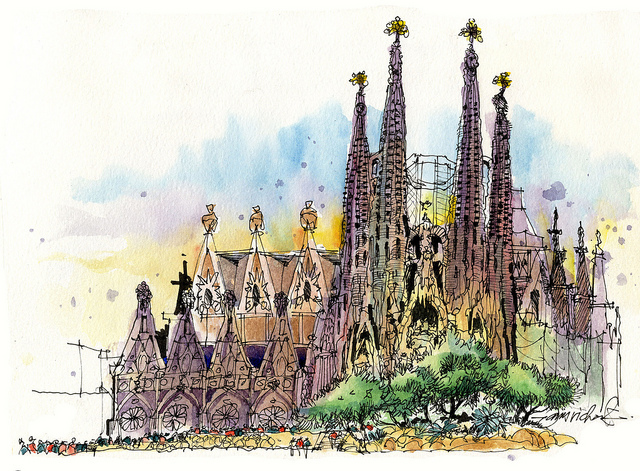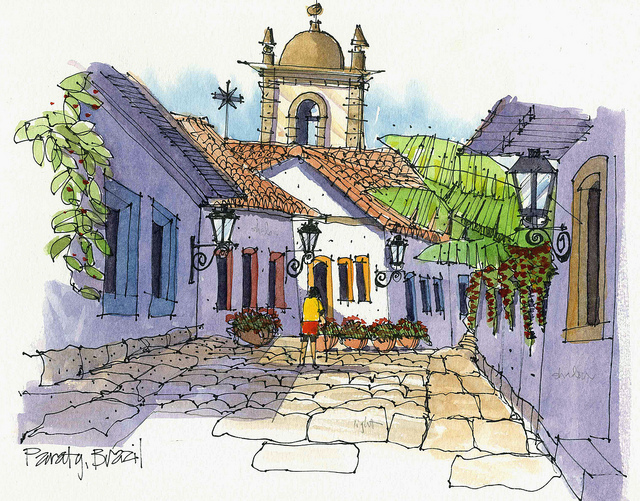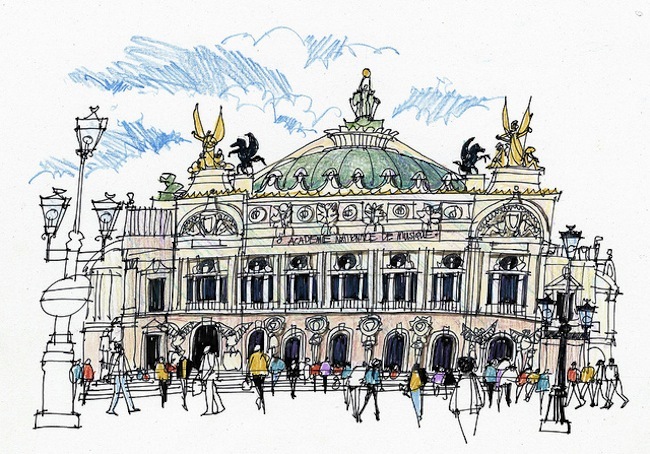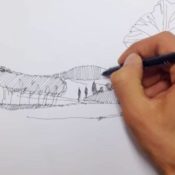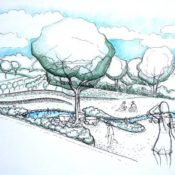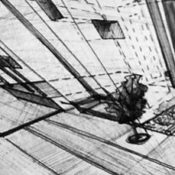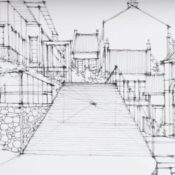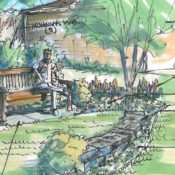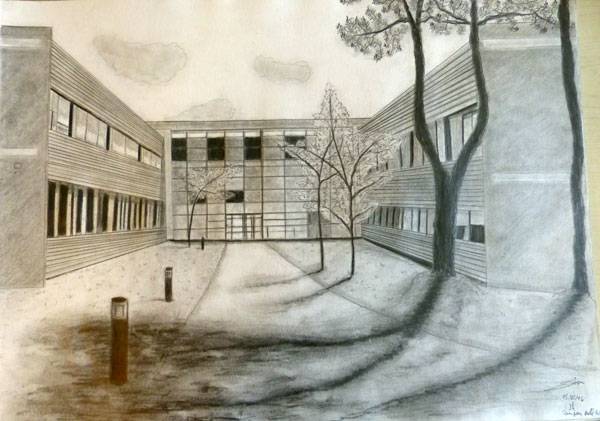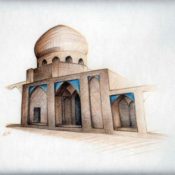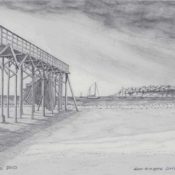28 search results for " James Richards "
If you didn't find what you were looking for try searching again.
Freehand Drawing & Discovery by James Richards | Book Review
We review Freehand Drawing & Discovery by Jame Richards. Hand drawing vs. Digital Technology – James Richards says “is not either/ or but both/and “ When I received Freehand Drawing and Discovery I had no idea how it would change my perspective and understanding of the skills we acquire as designers and the way they can influence our development as professionals on a daily basis. This book is an astonishing guide to learning a new language of expression and relationship to the surrounding world of freehand drawing!
Freehand Drawing & Discovery

Freehand Drawing & Discovery by James Richards, click here and get the book
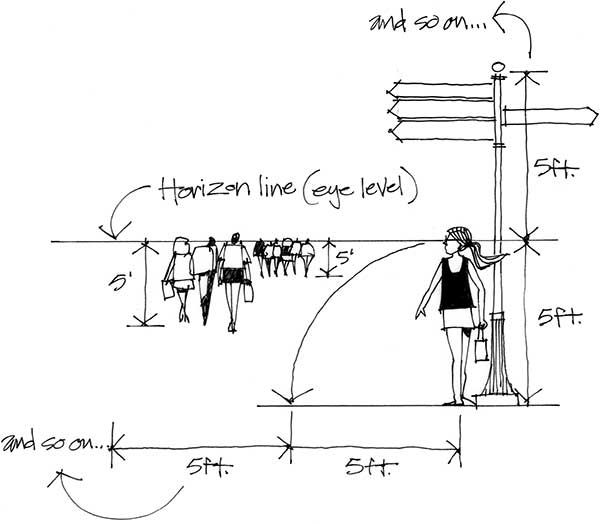
Perspective drawing (Reprinted with permission of John Wiley & Sons, Inc. James Richards, Freehand Drawing & Discovery: Urban Sketching and Concept Drawing for Designers, 2013)
Get it HERE! It is simply explained in what I call the ‘learning through examples’ method. No theory is clear without an example and that is what I love about this book! It is greatly supported by numerous images of sketches laid out in the continuity in which they were drawn with a detailed description. After having explained the process of creating a sketch, Richards demonstrates several techniques for bringing it alive through a variety of coloring techniques. What’s more, you get access to online video tutorials with James Richards exclusively with the book purchase! Other book reviews you may be interested in:
- Landscape and Urban Design for Health and Well-Being
- Drawing for Landscape Architecture
- Visual Communications For Landscape Architecture
As we have lately devalued hand drawing for diverse reasons, Freehand Drawing and Discovery brings it back on center stage, taking its place along with digital technology, increasing both their potential and quality.
Inspired? Get Freehand Drawing & Discovery and start drawing today!
About the Author: (taken from the back of the book) JAMES RICHARDS, FASLA, is an Associate Professor of Landscape Architecture at the University of Texas at Arlington, and is co-founder and Principal of Townscape Inc., an urban design consultancy. He is a national award-winning designer, writer and illustrator whose work spans landscape architecture, town planning, and urban design. Mr. Richards is a blog correspondent for Urban Sketchers and international drawing movement. He has travels globally conducting drawing workshops for both students and professionals. Book review by Yuliya Georgieva Return to Homepage
James Richards sketching techniques online!
This just in–many of you know that a large part of my work in recent years has been responding to invitations to provide lectures, demonstrations and workshops to conferences and campuses on my approach and techniques for freehand concept drawing and urban sketching. As a logical next step, I’ve collaborated with the excellent online learning company Craftsy to distill the key elements of my approach to on-location sketching into a crisp, 1.5-hour course that walks you through where to start, drawing architecture and entourage, creating an illusion of 3 dimensions, working with watercolor, and sketching on-location. Computer motion graphics clarify concepts and enhance the learning experience. I think it will be a great learning aid for designers who are interested in upping their sketching skills as a catalyst for creativity. You can see a preview here: www.craftsy.com/ext/JamesRichards_10159_D
James Richards Interview on Travel and Urban Sketching
Your sketches have a very unique, fun style to them. How did this develop?
My visual sense is undoubtedly shaped by the magazines and comics I read as a kid. I’d try to emulate the drawing styles of Mort Drucker, Ronald Searle, Paul Hogarth and others, so there’s some of that there. Also, the demands of my professional work as an urban designer has trained me over time to draw very quickly, so the speed of the strokes and the natural “left-handed lean” that results from my working fast probably translates into a more loose, fun style.
La Sagrada Familia, Barcelona
What inspires your work?
I travel a lot (43 countries so far); I’m inspired by the architecture, lively plazas and the buzz of positive energy I feel when I’m walking in great cities. Best of all is the people watching; as a designer I’m always watching the kinds of activity and human drama that unfolds in streets, parks and plazas. I see it, I want to draw it, and I want to do it in a way that others can share a part of that experience.
Paraty, Brazil
Let’s talk about process. What steps do you take when creating each piece?
I sketch on-location. I learned from urban sketcher Veronica Lawlor to walk all over, around and through a place, making a series of very small, quick thumbnail sketches. This was invaluable advice. When one of the thumbnails reveals a story to tell with a strong composition, that’s the subject.
RELATED STORY: Interview with Urban Sketcher Chunling Wu
I usually start with a horizon line, and a line frame. Then, I’ll actually draw some people first—some close, some further, walking, chatting, etc.—to ease my way into the sketch and to immediately add some life and depth to the scene. Then, the architecture is blocked out—big shapes first, then details, then darker values. I’ll add more people, cars, signs, street furnishings and other details to try to recreate the feel of the place. Then I’ll decide where to use color to underscore the focus of the sketch, or to try to capture a mood.


 What do you hope each piece tells the viewer about the place it depicts?
What do you hope each piece tells the viewer about the place it depicts?
Every place I visit has its own unique setting, architecture, history and culture. Great cities and places reflect that uniqueness, and the pride, aspirations and talents of the people who live there. I feel a sense of exuberance when exploring new places, and want others to sense that exuberance, too. In this sense, I think on-the-spot sketches, like travel, can open a window to open-mindedness and understanding of other places and cultures. I’d love for the drawings to inspire the people who view them to visit these places themselves.
The Palais Garnier, Paris
You seem to sketch quite a lot of busy, bustling cities. Is there a connection between style and subject?
Yes, I think so. I’m not trying to accurately recreate a view as much as I am trying to capture the energy I feel in the place. I try to express that in a strong overall shape for the composition, quick, variable lines, strong value contrast, and the focused use of vibrant color. I’m never quite satisfied with my interpretation at first, but when I revisit the sketch later, my experience of that place comes back to me.
Washington DC
Where or what has been your favourite place or subject to sketch and why?
The places I love best have a strong sense of history, authenticity, variety and a lively street life. The sites of our last three International Urban Sketching Symposiums—Lisbon, Santo Domingo and Barcelona—really stand out in my mind. You can walk everywhere, and there’s amazing subject matter everywhere you turn. And they are full of people who really love their city. That’s inspiring. Having lots of other sketchers there also enhanced the experience of those places, I’m sure.
Bosphorus waterfront, Istanbul
If you could sketch anywhere or anything in the world, where or what would it be and why?
I want to sketch the places I haven’t been. Cuba was at the top of my “bucket list” until this summer, when I got to travel and sketch there for a week. I’d still like very much to sketch in India. Hong Kong is high on my list. And I want to get to Africa, though it would be a different kind of environment and sketching challenge.
Rajburi, Thailand
Finally, do you have any tips or advice for readers who might be interested in sketching the places they visit?
Yes. Try to sketch whenever you can, of course. But here’s the thing: Try to find a group to sketch with. Sketching with a group versus alone is like the difference between plunking away at a guitar on your bed and joining a garage band—everyone rises by being part of the group. You learn from each other, you support each other, you inspire each other. You should take any opportunity to sketch that you can, obviously, but being part of a group accelerates the learning process, and adds to the fun, as well.
You can see more of James’ work on his blog.
I’m a big fan of James’ quick sketchy style that captures the busyness of places. What do you like most about it?
This interview was conducted by Lizzie Davey and was first featured on Wanderarti.
James Richards Sketchbook: A new blog!
Hi all; my new blog is up! Check in for current sketches and musings on design and creativity (and music and Mexican food and…you get the idea). I’ll also be posting updates on the final weeks of writing and illustrating my first major book, Freehand Drawing and Discovery: A Sketching Renaissance in a Digital Age (that’s the working title this week). Please check out the blog at the link below and become a member; I’d love to hear from you! -Jim
The Complete Beginners Guide to Improving Your Hand Drawing
Article by Carlos Cortés Hand drawing is not just essential in landscape architecture. It’s also fun! Here we have the complete beginners guide to improving your hand drawing. Do you feel amazed when looking at other people’s drawings or sketches? Do you think you don’t have what it takes to do your own hand drawings? Give a try —you might be surprised. Landscape architects use hand drawing to express ideas visually. It’s also a tool to analyze and explore the environment. If you are not sure on how to start or think you lack the ability, take a look at our guide. Here, we will show you some tips to start improving your hand drawing skills.
Improving Your Hand Drawing
First of All, Can You Draw? If you can talk, you can sing If you have fun, you can draw! Of course you can draw — you probably have being doing it for a while, even if it was just back when you were a child or today scrawling lines when you are bored. It’s really not a matter of learning to draw, but recognizing that you actually can. WATCH >>> Why people believe they can’t draw – and how to prove they can | Graham Shaw | TEDxHull
We are all born artists. This means that we all have the talent and ability to express ourselves through different mediums, in this case hand drawing. As we grow up, we might keep developing those skills. But if we don’t, we will need to start where we left off. Just be patient and practice! Some of the things that block us are directly related to our minds. Take a look at the 10 Reasons Why You Still Suck at Drawing, by Nick Shannon
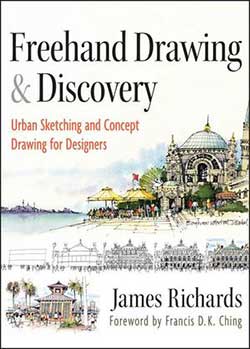
Read our book review on Freehand Drawing & Discovery by James Richards HERE!
Watch and Copy Method This is a method to apply whenever we are learning something new. We learn by watching and then doing. What we watch and then replicate is what we call technique — and there’s good technique and bad technique. How do we differentiate between good technique and bad technique? Bad technique looks forced and can deteriorate our material, such as pens, pencils, and the paper we use. It can also cause long-term injuries such as wrist pain. On the other hand, good technique looks relaxed; it allows you to understand what you are doing, and it’s a money saver! WATCH >>> Linescapes: How to draw a tree
Find Yourself! What makes a drawing incredible and beautiful is the creator’s essence. You might want to draw in a specific style or like someone you really admire, but at the end of the day, your creations will be unique. The more you practice, the closer you will get to your very own style. This will allow you to know what suits you and your drawings better. You will be able to solve problems faster and bring people your personal view of a project or idea. Practice, Practice, and More Practice From 10 minutes per day to a four-hour class, what really matters is that you draw daily. You can pick your goals and objectives, such as filling a sketchbook with trees, and another one with rocks, patterns, clouds, etc. Then you will have the evidence on how much you have improved your skills. WATCH >>> How to start a Landscape Sketch
Those are the basics for every beginner at hand drawing. With the right motivation and constant practice, your drawings will become the best tool for your projects, but also something you enjoy doing, not just for work. Drawings are our thoughts on paper, and this may help you to achieve clarity of ideas and self-knowledge. Remember that most of the roadblocks are in our minds. Copy what feels good, but don’t force yourself to be like someone else. Practice makes the master, and as Pablo Picasso once said, “Inspiration exists, but it has to find you working.”
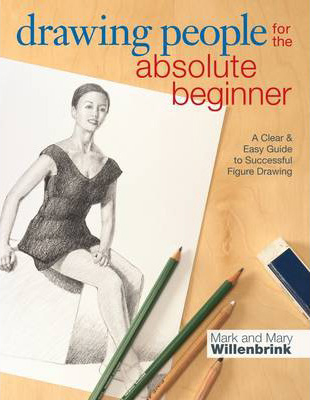
Drawing for the Absolute Beginner: A Clear & Easy Guide to Successful Drawing (Art for the Absolute Beginner) Get it HERE!
- Drawing for the Absolute Beginner: A Clear & Easy Guide to Successful Drawing (Art for the Absolute Beginner) by Mark Willenbrink
- You Can Draw in 30 Days: The Fun, Easy Way to Learn to Draw in One Month or Less by Mark Kistler
Article by Carlos Cortés
Top 10 Sketchy Saturday – Edition|041
This week’s Sketchy Saturday Top 10. Sketchy Saturday is where students, professionals and drawing enthusiasts all come together, not in competition but in unison, not to defeat one another but to inspire one and another. The entrants connect pen to paper, ideas to reality and ability to results. Skill levels, boundaries and language barriers are all broken as we give their talent the stage it deserves, exposing it to a worldwide audience. For these reasons Sketchy Saturday is one of our favourite parts of the week. Content is created to inform, to instruct, to inspire and for many more motives, in the case of Sketchy Saturday, the content is created to celebrate, to celebrate talent, enthusiasm and ideas. Allow yourself to be inspired by our selection of top sketches by top people, who want to share their gift with the world.
Enjoy this week’s Sketchy Saturday top 10!
10. by Simon Paulais, student in Landscape Architecture in Angers, France / Student in Landscape Architecture in Freising, Germany
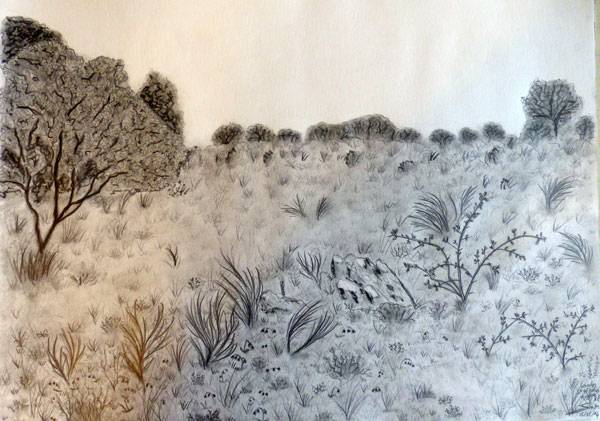
By Simon Paulais
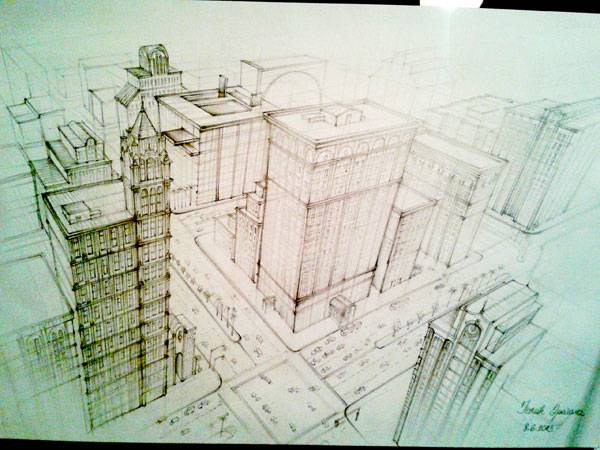
By Dragana Jelic
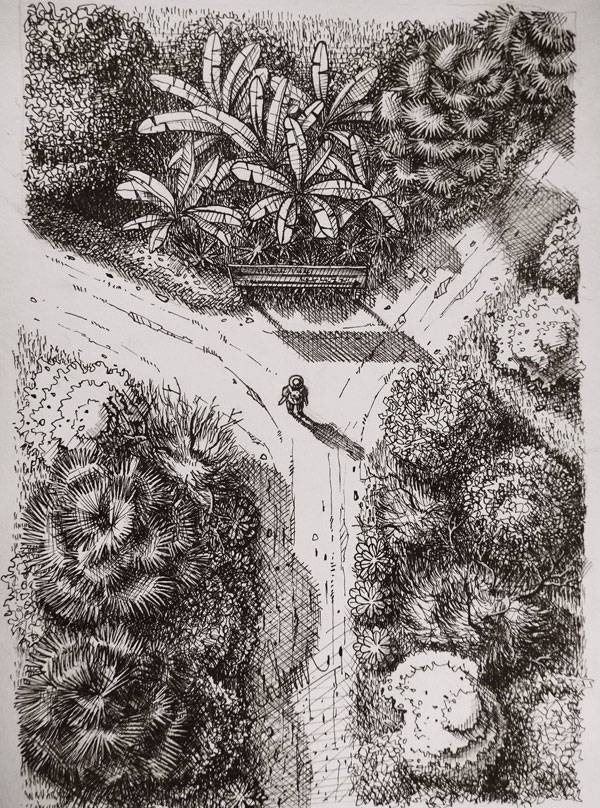
By Ngo Trong Hieu
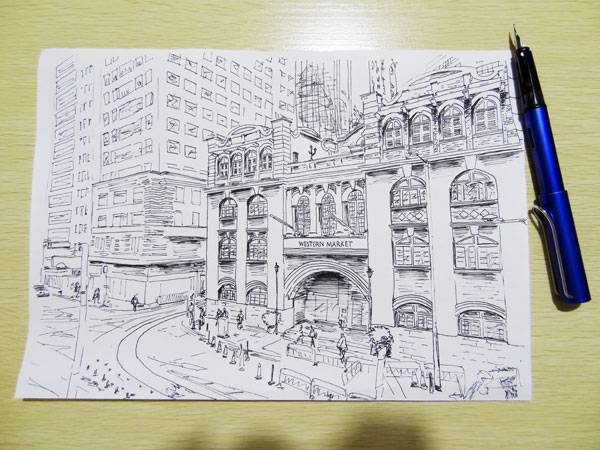
By Luke Yip
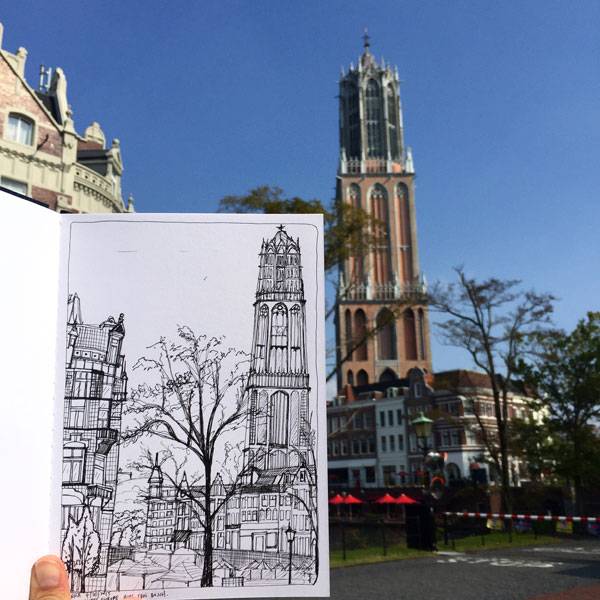
By Corinna Tai Xin Ci
- Top 10 YouTube Tutorials for Technical Drawing
- Digital Drawing for Landscape Architecture, second edition | Book Review
- Freehand Drawing & Discovery by James Richards | Book Review
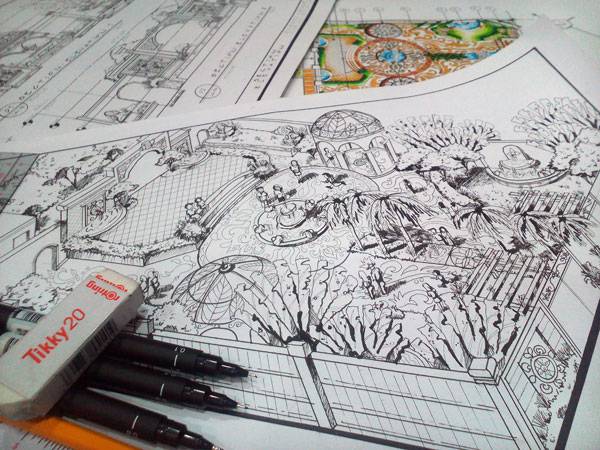
By Charl Justine Balanza Darapisa
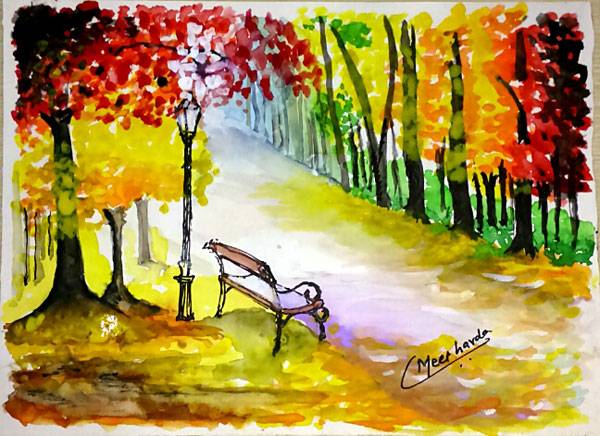
By Meet.Madhu.Chavda

By Prachpasit Saikaew
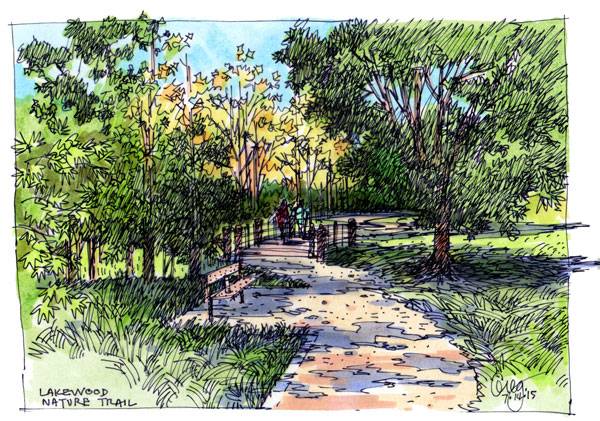
By Greg Mendoza
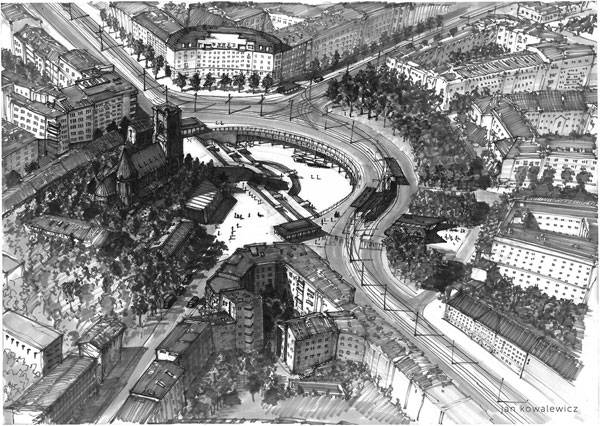
By Jan Kowalewicz
- Sketching from the Imagination: An Insight into Creative Drawing by 3DTotal
- Architectural Drawing Course by Mo Zell
Article by Scott D. Renwick Return to Homepage
Sketchy Saturday |040
This week’s Sketchy Saturday top 10. Sketchy Saturday is back after a long break, way too long, and we have a big back log of sketches to get out. As we sort through them, however, the top ones are rising to the top for your viewing pleasure. This week’s selection offers a range of styles and abilities making it another difficult week for judging as it is, of course, challenging to compare vastly different styles and so we have to look at each sketch from an overall point of view and rate them based on how they stand alone and not necessarily when compared to one another. We hope you are inspired by our selection of top sketches by top people.
Enjoy this week’s Sketchy Saturday top 10!
10. by Kristýna Haisová from the Czech Republic. Landscape Architecture student at the Czech University of Life Sciences in Prague. Works as a planner (designer of gardens, parks) for a small local studio.

By Kristýna Haisová
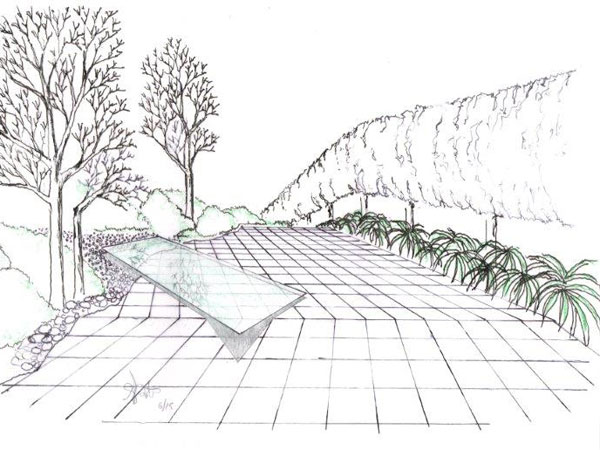
By Gerard Butterss
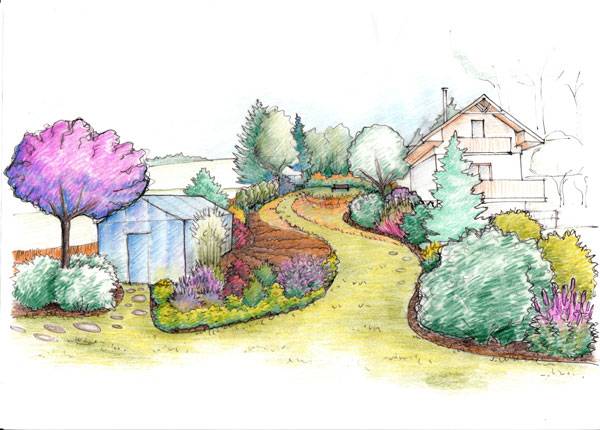
Klára Zuskinová
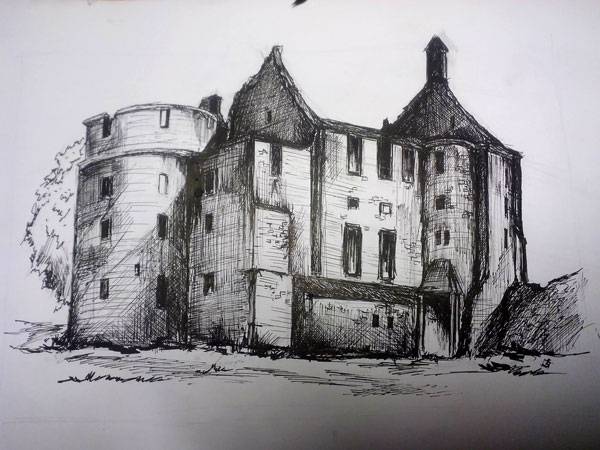
By Agnieszka
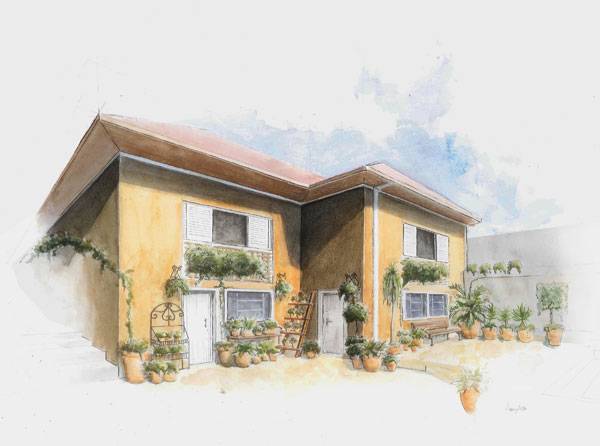
By Amaury Neto
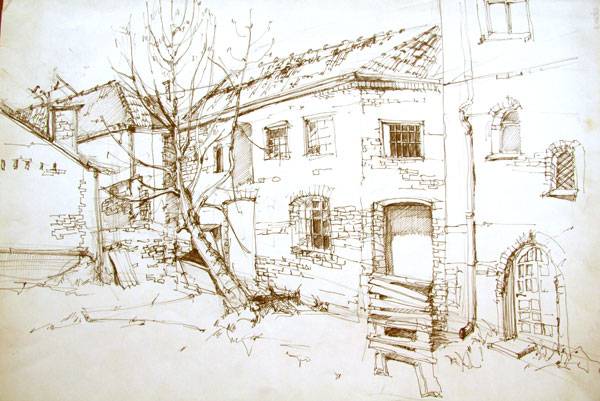
By Egle Garramone
- Top 10 YouTube Tutorials for Technical Drawing
- Digital Drawing for Landscape Architecture, second edition | Book Review
- Freehand Drawing & Discovery by James Richards | Book Review
“This sketch was made during my study of landscape architecture. It’s a part of a courty yard in Kaunas(Lithuania). It was not renovated so you could see many details that show its history. I made it in 2 hours and I used only graphic pen on paper. Motivation: Free time. Style: Graphic sketch. Location: Country yard in Kaunas (Lithuania) Material used: Graphic pen on paper”. 4. by Nguyen Thi Ha, architect and living in Hanoi, Vietnam “This sketch is a student’ exercise about apartments. The materials in the building are reinforced concrete, brick, glass windows and steel truss”.
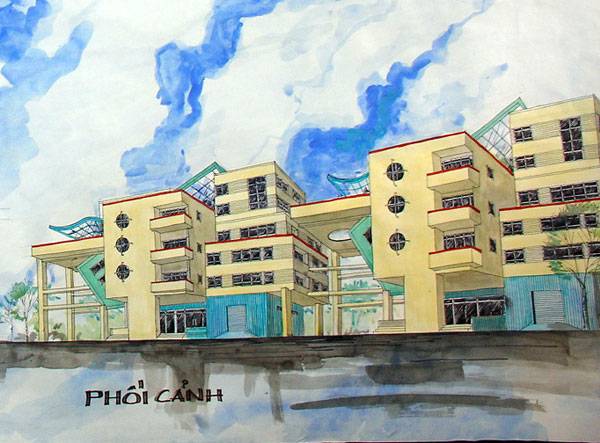
By Nguyen Thi Ha
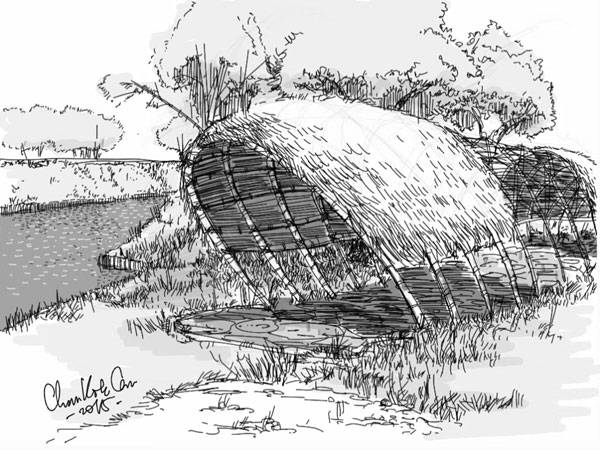
By Chan Kok Cen
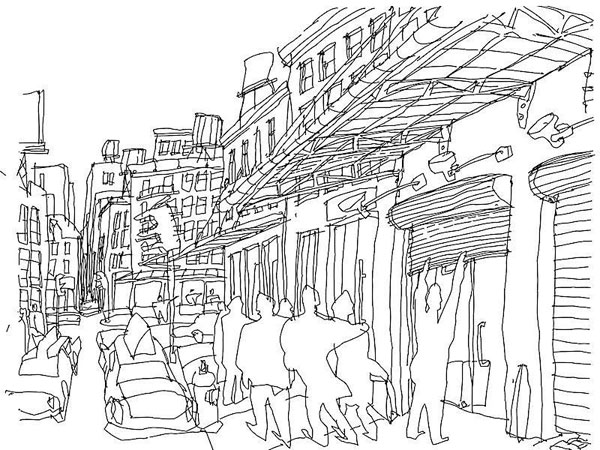
By Jarmo Suominen
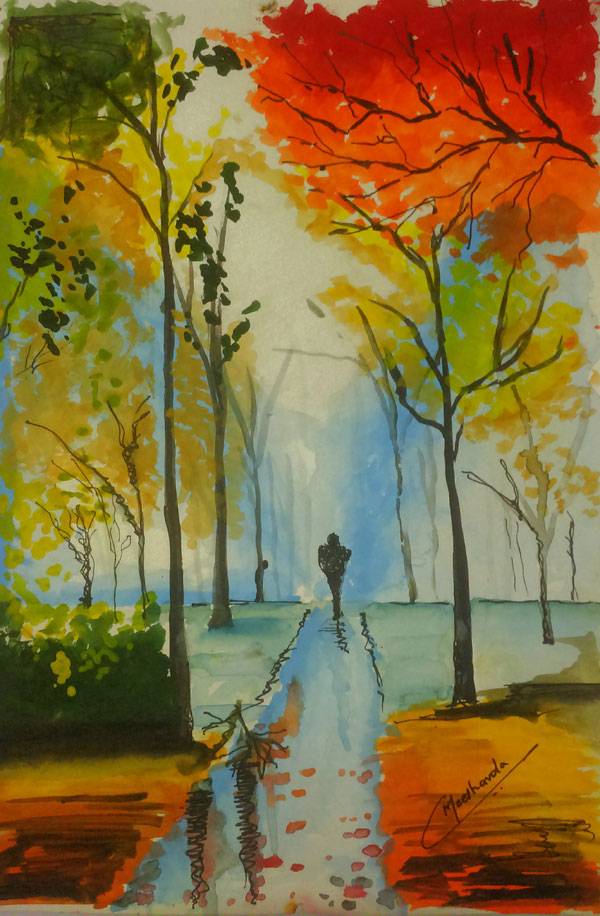
By Meet.Madhu.Chavda
- Sketching from the Imagination: An Insight into Creative Drawing by 3DTotal
- Architectural Drawing Course by Mo Zell
Article by Scott D. Renwick Return to Homepage
How to Draw Like an Artist with These 10 YouTube Tutorials (Part 2)
After the success of our first article on How to Draw Like an Artist with These 7 YouTube Tutorials, we had to follow it up with a second, more advanced collection. The list below is a diverse mix of tutorials giving tips on drawing with graphic pencils, pens, and charcoal. This time, we chose more advanced videos, since most of you already have basic drawing skills. The focus of this article is on landscape drawings and detail drawings that are helpful for every landscape architect or student. Here are 10 videos to boost your motivation for improving your drawings:
1. How to Draw Easy but Good-looking Trees
One of the must-have skills for landscape architects is drawing trees. Not only do we need to be able to quickly sketch a few green lines, but it is also important to include some of the details — or is it? The author of this video offers some simple tricks to improve your tree-drawing skills. In his opinion, it is important NOT to lose yourself in drawing all the detailed leaves, but to instead concentrate on making every tree a composition as a whole. WATCH: How to Draw a Tree
2. How to Draw Phenomenal-looking Trees (with subtitles)
If drawing “good-looking” trees is not enough for you, check out this video (and even if it is, please watch because these trees are fantastic!) In my opinion, this artist draws the most beautiful and diverse trees with pencils. Don’t let the language barrier of this video become a problem: There are English subtitles. Just watching his hands draw those lines makes me want to be able to draw like this so badly. Don’t forget to check out his other tutorials. WATCH: Drawing tutorial – Different trees | Kurs rysunku – Różne drzewa [S02E02 ENG/PL]
3. How to Draw Scenery in Perspective
This is a fluent, eight-minute video that shows how to draw advanced scenery of a rural village in one-point perspective. The details of the scenery are beautifully chosen, allowing the drawing to come alive. WATCH: How to draw a scenery in perspective
4. How to Start Landscape Sketches
This video explains how to break down a photograph into simple elements that can then be transferred over to start a sketch. It is a great help for anyone who is not confident when starting to copy a photo. WATCH: How to start a Landscape Sketch
5. How to Sketch and Draw Urban Scenes
In the process of becoming a good landscape architect, one needs to learn how to make quick sketches of the project site and its surroundings. This video gives tips on how to start with those sketches. WATCH: Urban Sketching & Drawing Outdoor Scenes Pt 1 | Some basics
6. How to Draw Landscapes with Charcoal Pencils
In this video lesson, the author creates a landscape using only charcoal pencils. Among pen drawings, the charcoals are a very important tool to fast-sketch shades or create scenery such as this. The result is something astounding. WATCH: How to Draw with Charcoal Pencils – Landscape Sketching
7. How to Draw a Waterscape
This video suggests a rather easy way of drawing calm waves in the sea. Additionally, it shows how to draw a discreet background with clouds. Other Articles You May be Interested in:
- Freehand Drawing & Discovery, by James Richards | Book Review
- Hand Drawing versus Computer Rendering. Which is Best for Landscape Architecture?
- Drawing for Landscape Architecture, by Edward Hutchison l Book Review
WATCH: How to Draw a Sailing Boat – How to Draw a Sea – How to Draw Clouds
8. Fast-sketching People
This urban sketching demo encourages us to always have our sketchbook as well as a pencil and pen ready, because there are always very interesting motifs to capture. Sketching people is a must-have skill for landscape architects, since including people gives every conceptual drawing the perfect finish. WATCH: Urban Sketching Demo : People in the Metro
9. How to Draw a Realistic Face (and Finally Get the Proportions Right)
With this video, you can learn the main techniques and rules of how to draw a realistic face and how to get the right proportions. The author uses a modified grid pattern that reduces the complexity of the normal grid pattern most of us learned in school. This modified pattern makes it easy to understand the proportions of every face fast. Check it out if you’re not as good at face drawing as you would like. WATCH: Realistic Drawing tutorial- Getting Proportions Drawn Correctly
10. How to Draw Eyes in Different Angles
This video demonstrates and explains how to draw the eye shape correctly and how to give it form by shading it. With this video, you will never be scared of drawing eyes again, and you will stop trying to avoid the eyes by drawing people only from behind. WATCH: How to Draw the Eye – Different Angles
Every artist has his or her own weaknesses. It does not matter if you are already an advanced drawer or just a beginner. The most important thing is to be aware of the fact that every one of us has an artistic vein and that this side of us can always be improved. These 10 videos are only a suggestion of where to start (or continue) with this improvement. I hope you enjoyed our new collection.
Recommended Reading:
- Drawing and Designing with Confidence: A Step-by-Step Guide by Mike W. Lin
- Landscape Perspective Drawing by Nicholas T. Dines
Article by Sophie Thiel
Sketchy Saturday |039
This week’s Sketchy Saturday top 10. Sketchy Saturday never fails to impress us. But what particularly impressed us this week was the descriptions people wrote. They had passion in their words, which matched the passion on display in their images. Passion is the vital ingredient when it comes to success. You can study all you want, you can work for as long as you want and as hard as you want, but without a foundation of passion to guide you, you’ll never be great at what you do. You may become a well respected professional, but you will lack the passion and, therefore, the drive, dedication and commitment to stand out from the crowd. Each one of these sketches is passion manifested for the whole world to see. Enjoy this week’s Sketchy Saturday top 10! 10. by William Corbin Newton, by 4th-year landscape architecture student at the University of Georgia, USA

By William Corbin Newton
- Top 10 YouTube Tutorials for Technical Drawing
- Digital Drawing for Landscape Architecture, second edition | Book Review
- Freehand Drawing & Discovery by James Richards | Book Review
8. by Klaus Ostendorf “Over many years I did voluntary work in developing countries like Africa and India. Also, I travelled to the desert countries Egypt and Morocco. In most of these places, there are problems with a shortage of water. There are of course magnificent rivers flowing through their countries, but the problem is always to transport this water inland to their farms and villages and also into the deserts. While pondering this problem I got this idea to design a mighty bridge over these rivers. In principal, I did copy the Aqueducts of the old Romans. I had studied them before in Italy, Spain and also in Turkey. This bridge could house many terrace living quarters and also transport water in great channels on top of this bridge. This Bridge could be self-efficient with electricity through sun collectors on top of this waterway. On top of this bridge, there is a waterway and also an Autobahn designed. Also electricity- and telephone cables could have a place. Water can be transported deep into the country and into the desert. So would also this motorway and canals run deep into deserts and the country, and, therefore, would be connected with capital cities”. The drawing was in the style of a freehand perspective. I used Ink-pen, colour pencils and Photoshop”.

By Klaus Ostendorf

By Kamil Dadono
- Sketching from the Imagination: An Insight into Creative Drawing by 3DTotal
- Architectural Drawing Course by Mo Zell
Sketchy Saturday |038
This week’s Sketchy Saturday top 10. Welcome to the internet’s biggest melting pot of sketchy talent. Each week you guys send us in your best handy work and the LA Team go through it, carefully selecting who should make it into the top 10. It’s no easy task, for two main reasons; one it’s hard to establish a criteria for selection when there are such a diversity of styles on display. Secondly a lot of you are so enthusiastic about Sketchy Saturday that you send in several sketches and as a Sketchy Saturday policy we only select a maximum of one sketch per artist to be featured, this does make things fair but it also means a lot if incredible work does not get featured. Enjoy this week’s Sketchy Saturday top 10! 10. by Kyle Schellhorn, Student at Iowa State University, United States

By Kyle Schellhorn

By Eric Arneson
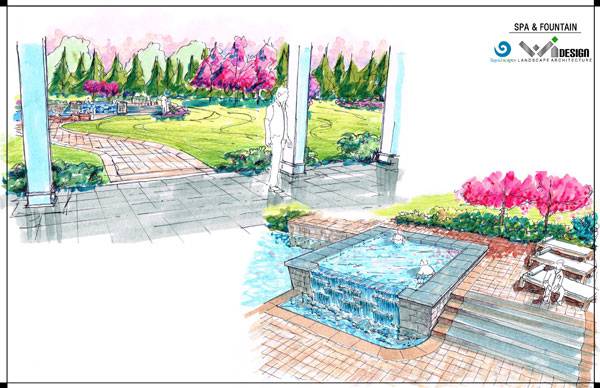
By Pete Bonette
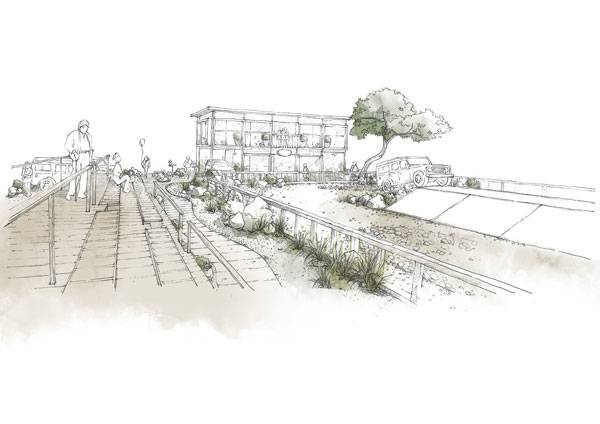
By Ming Song
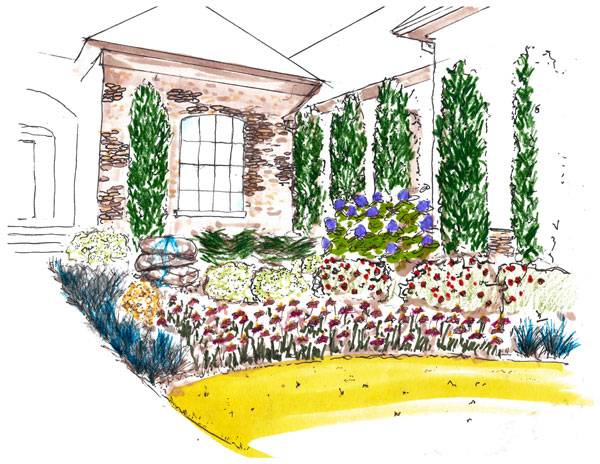
By Brian Hartwyk

By Chester Arante Atienza
- Top 10 YouTube Tutorials for Technical Drawing
- Digital Drawing for Landscape Architecture, second edition | Book Review
- Freehand Drawing & Discovery by James Richards | Book Review

By Nuntiwa Waiyasith
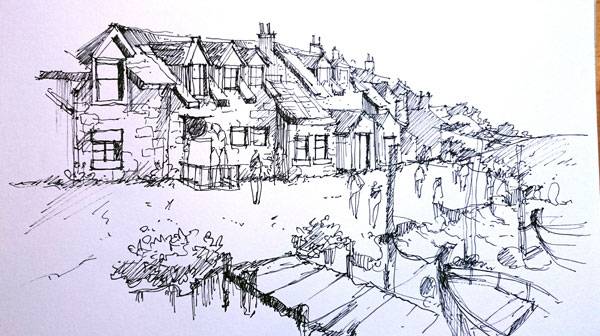
By Nor Hidayah Ramlan

By Osadha Wedyanto

By Kamila Służewska
- Sketching from the Imagination: An Insight into Creative Drawing by 3DTotal
- Architectural Drawing Course by Mo Zell
Article by Scott D. Renwick Return to Homepage
Sketchy Saturday |037
This week’s Sketchy Saturday top 10. We don’t run the Sketchy Saturday every week because we have to wait until the right sketches come in. We take pride in posting a rich diversity of hand drawing talent as we want to celebrate the many different styles that are sent into us. We don’t just want generic sketches, we want sketches that are unmistakably yours and an extension of who you are and what you can offer the world. Student, professional or hobbyist, everyone gets treated the same when it comes to Sketchy Saturday, making it a unique melting pot of passion, creativity and skills. Enjoy this week’s Sketchy Saturday top 10! 1o. by Elisabeth Lindman garden designer / architect at Lustgård Trädgårdsdesign, founder and chairman of the Swedish Society for Garden designers, Sweden

By Elisabeth Lindman

By Eva Suellen de Oliveira Fortaleza

By Richard Hodgetts

By Djordje Pralica

By Namdev Talluru
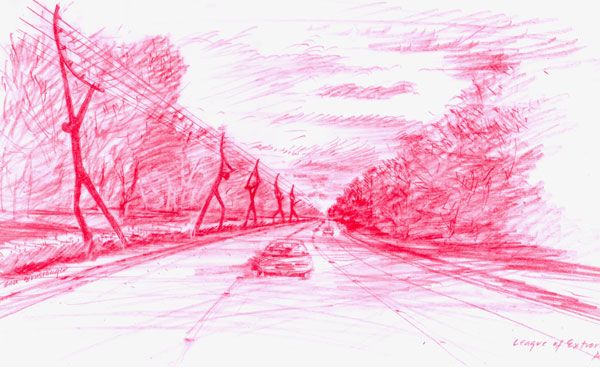
By Eric Ernstberger
- Top 10 YouTube Tutorials for Technical Drawing
- Digital Drawing for Landscape Architecture, second edition | Book Review
- Freehand Drawing & Discovery by James Richards | Book Review

By Peter Bonette

By Bakhtiar Amir

By Lily Mank

By Peter Bonette
- Sketching from the Imagination: An Insight into Creative Drawing by 3DTotal
- Architectural Drawing Course by Mo Zell
Article by Scott D. Renwick Return to Homepage
How to Draw Like an Artist, With These 7 YouTube Tutorials
Good hand drawing skills are an excellent tool for any landscape architect to have. But here’s a little secret, you don’t have to be born with it, you can learn. On our way to becoming skilled artists, we have to learn lots of lessons and often fight inner voices that tell us to give up because we are “just not good enough”. However, we don’t have to master this challenging process on our own! On the one hand, there are countless beginners who struggle the same as we do; but on the other hand, there is this huge YouTube artist community trying to motivate and support us as we improve our drawing skills. These great Samaritans post thousands of free videos to help us continue practicing our drawings and give useful advice. In this article, I found and summed up the best seven videos for novice artists. 1. How to Get Started — A Motivation Boost To tackle the improvement of your drawing skills, you just need to do one simple thing: Keep on drawing, no matter how much you hate your drawings in the beginning! I know for myself that this sounds easier than it turns out to be. However, drawing is in fact just a skill that can be learned and improved over time. The author of this video clears up with some myths about drawing and no longer accepts excuses of people claiming they can’t draw. Everyone can learn how to draw, so please sit down and watch this motivational boost. WATCH: The Best Ways to Learn Drawing
2. How to Draw Basic Figures The most basic thing every artist has to learn is how to draw figures. This important lesson is explained in an easily understandable way and slowly enough to allow you to draw simultaneously on your own with the video. Additionally, you will get an insight into the anatomical relations of the human body. Grab a pencil and a piece of paper and start practicing your figures. WATCH: How to Draw the Figure from the Imagination
3. Details are Nothing Without Gesture This video lesson teaches us about an important element that makes drawings look dynamic –gesture. The best way to familiarize oneself with gesture is through quick sketch drawing. To express emotion in drawings, it is important to focus on quick and elongated “action lines” as seen in this video. WATCH: How to Draw Gesture
4. Shadows and Shading Cross hatching, parallel lines, smudging — there are different ways to shade your objects or figures in a drawing. This short video presents those types in an easy-to-understand manner, using simple forms that will allow you to practice them right away. WATCH: Shading Lessons: Learn How to Draw Shades
5. Expensive Drawing Materials are Overrated Even if professional artists own a wide range of drawing supplies, you don’t need to amass a plethora of expensive drawing equipment. In my opinion, a soft pencil (2B), paper, and maybe an eraser are sufficient to begin with. In your ongoing drawing process, you will find yourself getting more confident in trying out new drawing styles that require other tools. If you have already reached this stage, or if you want to be prepared for everything from the beginning on, this video will help you make the correct choice of drawing materials. Other Articles You May be Interested in:
- Freehand Drawing & Discovery, by James Richards | Book Review
- Hand Drawing versus Computer Rendering. Which is Best for Landscape Architecture?
- Drawing for Landscape Architecture, by Edward Hutchison l Book Review
WATCH: Drawing Class: Beg Drawing I: Drawing Materials
6. How to Draw Perspective Perspective drawings are the key to an authentic and real look. Perspectives vary in their number of disappearing points; the most common ones are 1-point perspective, 2-point perspective, and 3-point perspective, which are all used in this video. If you are already familiar with the very basics of perspective drawings, skip the first six-and-a-half minutes and watch the author draw a simple, but beautiful landscape in the second half. WATCH: How to Draw Perspective
7. Keep on Practicing In the end, I wanted to give you some advice as shown in this video: To become a confident artist, you must practice drawing over and over again. For example, if you want to draw portraits, the best way is to fractionize the face and learn to draw various eyes, noses, mouths, ears, and so on. Of course, the same applies to trees in landscapes and items in every other drawing, too. WATCH: How to Practice Drawing
– As we all know, the world of YouTube is endless. That’s why choosing only seven videos that should be representative for teaching us how to draw was a really difficult task. The recommended videos aim to explain only the most important steps in getting started with drawing. Although I hope those were very helpful for you, please keep watching other videos to practice the topics that you are truly interested in and seek for your own drawing style.
Recommended Reading:
- Drawing and Designing with Confidence: A Step-by-Step Guide by Mike W. Lin
- Landscape Perspective Drawing by Nicholas T. Dines
Article by Sophie Thiel
Login
Lost Password
Register
Follow the steps to reset your password. It may be the same as your old one.





